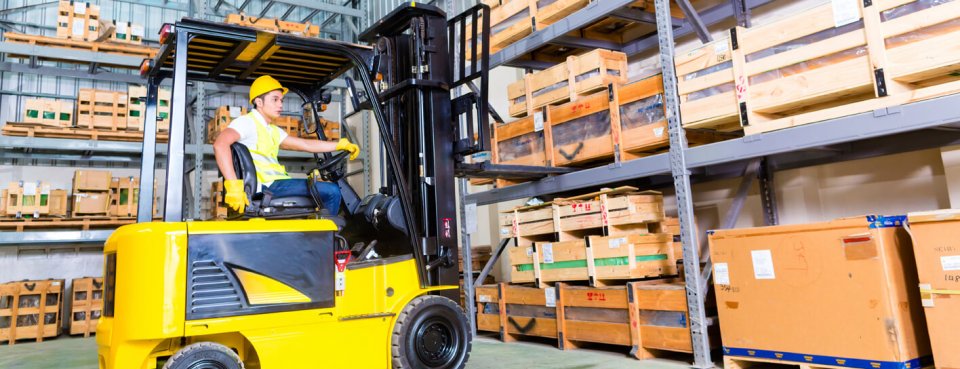Lift trucks – operator training and safe use

Therefore, it is crucial for employers to ensure that all of their lift truck operators have had appropriate training* and be tested/assessed to make certain that they achieve the necessary standards. This applies to both new and existing operators, including those who may operate lift trucks only occasionally in the workplace.
What should training include?
Operator training should always include the following three stages:-
Basic training and test/assessment
This training should be undertaken outside normal work activities and fully cover all of the skills and knowledge required to safely operate the type of lift truck and any attachments.
This should also include an awareness of risks associated with lift truck operations.
During instruction, a trainees’ progress should be continually assessed and once the training is complete the trainee should pass a test to demonstrate they have the necessary practical and theoretical knowledge and skills to operate lift trucks safely.
Specific job training
Specific job training usually follows the basic training, but can be combined with it and should be tailored to the type or design of the lift truck they are to operate and also the workplace itself, e.g. due to site layout, racking, bays etc.
Familiarisation training
This should be ‘on the job’ training, under close supervision and during usual work conditions, and can include applying the skills learned to undertake simple tasks and then moving onto more complex ones, as appropriate.
Authorisation
Once operators have successfully completed all necessary training their employers should provide them with written authorisation setting out the types of lift trucks they are permitted to use, together with any limitations that might be applicable.
Regular monitoring and assessment will ensure that authorised operatives remain competent.
Certificates of basic training
Although there is no legal requirement to issue certificates of basic training they are a useful way of providing evidence that operators have been trained to a certain level, i.e. employers will require evidence of a new workers’ training if they are to operate lift trucks.
Choosing instructors
When deciding who should carry out the training, employers can chose to:-
- send their employees to an external training organisation
- appoint a commercial or self-employed instructor to deliver the training at the organisaton’s premises or
- have a suitably trained employee from their own company to deliver the training ‘in-house’.
Employers MUST ensure the instructors they appoint are competent and obtain proof, e.g. a valid trainers’ certificate.
To assist employers in their selection of training providers, there are a number of organisations that provide accreditation for lift truck training schemes. These voluntary schemes* help set and maintain professional training standards.
*The HSE have recently reviewed their guidance on lift truck operator training and use, which replaces both their existing ACoP and their HSG6 document. As a result, Citation’s fact sheet entitled ‘Forklift Trucks’ has been updated and can be found on our website, under Citnet. This fact sheet expands on what objectives should be considered for all training, including refresher training, choosing instructors and provides more information on voluntary accreditation schemes.
Get more information

